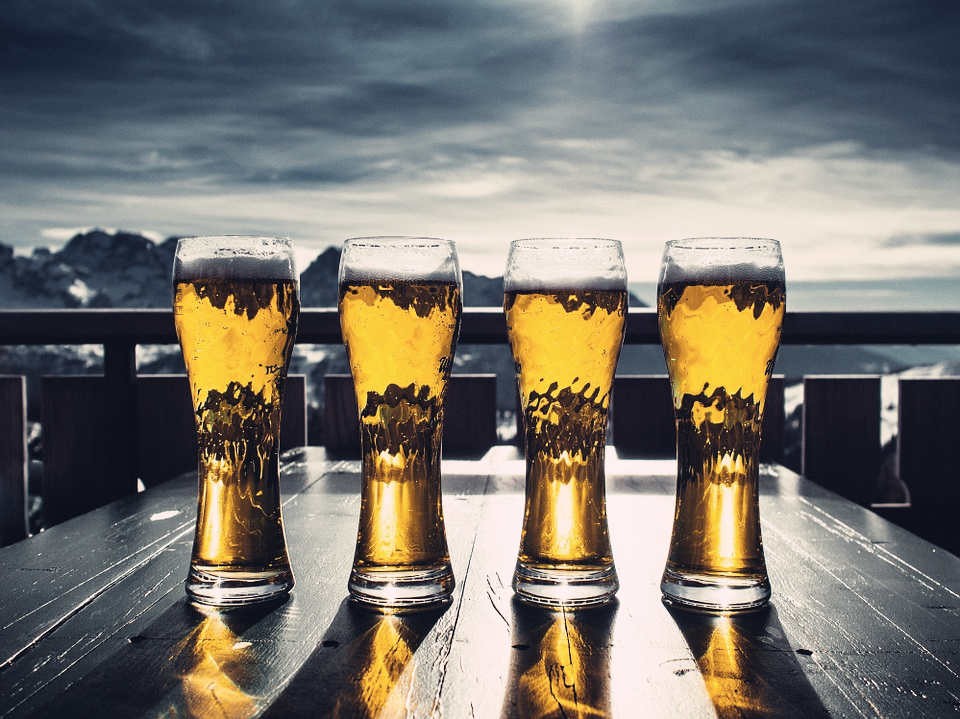Australian Drinking Culture–Melbourne Function Venue
–The evolution from drunkards to alcohol connoisseurs Function Venue Melbourne
Melbourne Function Venue –In 1869, Marcus Clarke said of Australians,
“They are not a nation of snobs like the English or of extravagant boasters like the Americans or of reckless profligates like the French, they are simply a nation of drunkards.”
At the time, Clarke’s observation was understandable. During Australia’s penal era, rum had been used as currency and it is believed that the colony’s inhabitants drank more alcohol per capita that any other time in human history. Today; however, Australia has evolved a number of customs surrounding alcohol consumption that would make words like “alcohol connoisseurs” more appropriate than drunkards. These evolutions demonstrate that rather than drink for the affect of the drug, Australians are attracted to the social aspect of drinking and the taste itself. — Function Venue Melbourne
The most conspicuous of Australian customs is to drink socially. As Finch Hatton wrote in 1887:
” All through Australia, in every class, it is not considered good form for a man to drink by himself. Very few even of the most hopeless drunkards ever do so. The consequence is, that when a man feels inclined to drink, he immediately looks out for someone to drink with…At whatever hour of the day a mans meets another whom he has not seen for say twelve hours, etiquette requires that he shall incontinently invite him to come and drink. This is a custom that pervades every class in the colony, and cannot be departed from without something more than a breach of good manners.” Finch Hatton 1887
Accompanying the social consumption is the round or shout. This involves one person buying the drinks for a group of friends. Once everyone has finished their drink, another person from the group will buy a round and so on until everyone has bought a round. As Hatton explained:
“Shouting”, or rather its meaning, is peculiarly Australian. The shortest and most comprehensive definition of “shouting” is to pay for the drink drunk by others. Drunkenness is the vice of which “shouting” is a parasite.”
Contrary to what Hatton believed, shouting probably contributed to Australia moving away from the hard liquor drinking cultures that still prevail in Russia, South America and East Asia, where extreme drunkardness and death are common. Generally speaking, Australians are more prone to drink wine and beer, as well as have conversations while drinking. Shouting encourages conversation because it increases the likelihood of one person slowing down out of concern for money being spent or because they want to chat about something. As long as one person has a desire to slow down, the rate of the entire shouting group can be slowed. All they need to do is suggest beer instead of a spirit or keep the conversation flowing. On the other hand, in Asia, drinkers will just down one spirit after the next as they try to impress each other by showing they are strong drinkers. Because the drinks may be paid for by the boss or the richest member of the party, there isn’t that concern about slowing down the rate of drinking to save money. Furthermore, because conversation is less important, drinking becomes the sole focus on the night out.
— Function Venue Melbourne
Of course, slowing down drinking probably wasn’t the reason for the custom of the round developing. In 1978, the National Times speculated that it was a kind of ritual that solidified group belonging:
“In tribal societies in which gift giving is economically important, there may be exchange of gift giving of identical (or useless) gifts which serve to maintain the relationship between donors. In Australia, the ritual of the round, known virtually to all adult members of society has some parrallel functions. It symbolise entry to a group (and, for that matter, makes pointed an exclusion). It binds a group together.”
World Health Organisation figures provide a useful insight into how these customs have reduced overall alcohol consumption in Australia and also changed Australian tastes from spirits to beer. Specifically, Australia ranks 5th in per capita beer consumption but is not even in the top 20 when it comes to spirits. The love of rum is truly passed.
–Function Venue Melbourne
While alcohol abuse is a relatively rare feature of Australian life, many Aboriginal communities still suffer severe alcohol problems. These problems can be directly attributed to wowsers wanting to ban alcohol in Australia, but only succeeding in having it banned for Aborigines. Obviously politicians weren’t keen on a complete ban because that would mean they would have to go without a drink as well, but banning whites from selling to blacks seemed like a noble way to spare Aborigines the vices of white society, and win a few votes in the process.
Australian Drinking Culture–Melbourne Function Venue
| Annual beer-drinking for adults per capita | Annual spirits-drinking for adults per capita: |
|
|
(Data comes from the World Health Organization’s Global Status Report on Alcohol 2004.)
—Melbourne Function Venue
Although the ban allowed wowsers to feel that they were helping Aborigines, it forced Aboriginal drinking underground. Instead of drinking in a pub where the custom of the round could slow drinking out of financial or social considerations, Aborigines would get their hands on cheap booze and head to a park to drink it. Here young children could access booze that they couldn’t get in the pub, and individuals could drink until they passed out. Worst of all, drinking in the park lacked the protection of the kind of security seen in the pub so if one drunk became violent, it was easy for the violence to spread.
— Function Venue Melbourne
Being forced to buy illegally also might have encouraged Aborigines to buy the booze that gave them the maximum bang for their buck and which was easiest to carry. This tended to be spirits. Unfortunately, spirits tend to wreck much more havoc than beer (which moderates drinking by bloating the drinker.)
When the sale of alcohol to Aborigines eventually became legal, separatism was a continuing legacy of the past ban. The above photos show white and black Australians drinking on opposite sides of a Darwin street. Aborigines bought alcohol out of a window at the back of the bar called the “dog box”, a process of buying that originated when selling booze to Aborigines was illegal.
Because the ban caused the cultures of alcohol consumption to develop in different ways, it was not always easy to reconcile them in the front of the bar when the supply of alcohol to Aborigines became legal. Aside from encouraging seperatism, another legacy of the ban was the choice of alcohol. Aborigines often gravitated towards cask wine or spirits because these were easiest to carry and offered maximum bang for the buck. Non-Aborigines went for the beers commonly bought in a shout.
Packaging of alcohol is another area that demonstrates the development of more of a connoisseur minded approach to alcohol consumption. In 1965, Thomas Angove invented the wine cask, which made it easier to drink less. The wine cask is a cardboard box housing a plastic container which collapses as the wine is drawn off, thus preventing contact with air that will cause the wine to turn to vinegar. It enables people to have a singular glass of wine with a meal instead of finishing a whole bottle lest it go to waste. (Admittedly, cask wine is also used by drunks wanting alcohol that is easy to carry.) Other innovations, such as the stubby, twist top, and stelvin cap were not Australian inventions, but they were accepted in Australia (but rejected in other markets) because of an underlying pragmatism to embrace the best product available – as a true connoisseur should.
— Function Venue Melbourne
Even though ‘connoisseur of alcohol’ is far more appropriate description for Australians than ‘drunkards’, the drunkard stereotype prevails. Arguably, a significant reason for this is that Australian governments promote a stereotype of drunkardness in order to justify high taxes on alcohol aimed at eliminating drunkardness. These taxes highly dubious. Firstly, alcohol is taxed as a percentage of the price of the alcohol instead of being indexed to the amount of alcohol in the beverage. For example, wine is taxed at 29% of its wholesale price, which encourages the production of high volume, low quality products. Under the system, a bottle of wine containing 8.5 standard drinks can be purchased for $3. It is the perfect product for teenagers or people whose sole aim is to get drunk. Meanwhile, having round with three friends in a pub would cost around ten times as much for half the alcohol consumed in a much safer environment.
— Function Venue Melbourne
Secondly, an inability to afford to drink beer in a pub is forcing many Australians to “fuel up” prior to going out. The high levels of intoxication that is obvious in such individuals creates a very visible scene that suggests that Australians have an alcohol problem, when perhaps the problem is another example of social engineering gone wrong.
- Immediacy – Never accept a beer if you do not intend to shout on that evening. Shouting “next time” is not acceptable no matter how much interest is involved.
- Reciprocal – Even worse than the previous rule is accepting beers from the drinking party and then just buying one for yourself when it is your turn.
- Consistency – Changing drinks on people during a shout is considered poor form. I.e., shouting everyone VBs then asking for a “boutique” beer on the return leg.
- Accountability – Knocking over someone else’s beer will only be tolerated if there is a full replacement on the table. In some mining communities, the spilling of ones beer requires the guilty party to receive a punch in the arm from all other members of the party which could be up to 60 people. — Function Venue Melbourne
- Egalitarian – No matter how much money is earned by each of the party members, or where their money came from, the same shouting rules apply.
- Free will – The order of the round is determined by each individual volunteering that it is his/her shout. Fellow members should not never have to remind an individual of their obligations to the group. They will only do so in the event of a breach.
- Abstaining – From time to time an individual may wish to stop getting drunk. Ideally, they should wait till the completion of every group member’s rounds before abstaining from future rounds. If it is essential that they abstain mid-round, they should request a non-alcoholic beverage. This ensures that the first volunteer is not punished for putting their hand up first. It ensures group equality and it also ensures that the person buying the next round does not feel like a bludger by being remiss in their obligations.
- Gender neutral- Should a women be given a drink that has been purchased in the course of buying a round, she is subsequently part of the round. All the previous rules thus apply. A round can consist of only two people.
Questions to think about: Australian Drinking Culture–Melbourne Function Venue
How can we help disadvantaged MPs overcome their alcohol addictions?– Melbourne Function Venue
Over the last century, politicians have developed numerous strategies to counter problem drinking in Aboriginal communities and amongst young people. Meanwhile, binge drinking has been rife in Parliament House. For example, Australia’s first prime minister, Edmond Barton, was known as Toby Tosspot” due to his fondness for a drink. Another Prime Minister John Gorton, inspired the euphemism “Gorton’s Flu” in reference to a hang over. Still another, Bob Hawke, held an entry in the Guinness Book of Records for sculling 2.5 pints of beer in 11 seconds. Still another, Kevin Rudd, got drunk and visited a strip club with journalists. As a fundamentalist Christian that often gave press conferences on Church steps, it was indeed an example of the demon drink leading him astray. Aside from the leaders, countless politicians have been renowned for their long lunches, and their use of grog to pass the time. More recently, it was alleged that Peter Slipper, the former Speaker of the House (deemed to be the most moral position in parliament) frequently passed out in Parliament House from drinking red wine. On one occasion, he was thrown out of a bar for being drunk and on another, he was so drunk that he was filmed urinating out a window.
— Function Venue Melbourne
Assess whether the following strategies would be effective in countering problem drinking amongst politicians
- Quarantining the expense accounts of MPs so that they can’t be used to purchase grog
- Quarantining the salaries of MPs so that they can’t be used to purchase grog
- A complete ban on the “rivers of grog” that flow into Parliament House
- Prosecution of any liquor licence owner that supplies grog to politicians
- A tax on alcohol supplied to Parliament House
- Creating a Problem Drinker Register amongst MPs and banning the supply of alcohol to these MPs
- Running a media campaign in Australia’s major newspapers that “raises awareness” about the struggles that politicians have with alcohol
- Running an education campaign targeted at MPs that raises awareness about the dangers of alcohol
- Printing pamphlets for MPs, which have the slogan, “Say No to grog.”
Controlling problem drinking through tax
— Melbourne Function Venue
- Rank the following drinks it terms of risk of getting blind drunk: beer, cask wine, premium wine, vodka, whiskey, Baracadi Breezer, Dark & Stormy, cider, Passion Pop
- Rank the following in terms of safe places to drink: park, pub, nightclub, house, bushland, under a bridge, beach, alone, with friends
- Design a tax on alcoholic drinks that encourages consumers to purchase alcohol that is less likely to cause them to get blind drunk
- Design a tax on alcohol that encourages people to drink is safe environments if they do want to get blind drunk
- * For ideas, read the information below:
Products that are considered vices have a way of attracting taxes, which are often implemented in ways that raise lots of money for government but do very little to reduce the severity of the problem. Arguably, alcohol is the classic example. In 2008, the Federal Government of Australia made a great deal of noise about its plan to increase the tax on alcopops (pre-mixed drinks.) Through the media and in a very public way, the government declared that alcopops were designed to appeal to young people and therefore a higher tax was warranted.
Once implemented, the Government’s tax increased the retail prices of alcopops by 25 per cent. This corresponded with a 30 per cent drop in sales of alcopops in the 2008-09 financial year. Overall sales of alcohol remained constant.
In response to Government press that stated the drop in sales of alcopops was good news, Steve Riden, a spokesperson for the Distilled Spirits Industry Council, said,
“I challenge anyone to the binge drinking culture of Australia has improved in the past two years since the tax came in. Anyone who claims it has worked because alcopop consumption has gone down depends on there being a magical group of young people who will only drink alcopops and nothing else.” (ABC News Online 27th May 2010)
Media Advocacy to Control Binge Drinking–Melbourne Function Venue
Australian Drinking Culture–Melbourne Function Venue
Government Policy towards Aborigines is distributed through the media and is in turn shaped by the media. A good example of this occurring was the issue of grog bans in Aboriginal communities. In 2013, the Liberal Premiers of Northern Territory and Queensland started removing restrictions on alcohol in Aboriginal communities. According to Queensland premier Campbell Newman, the restrictions were discriminatory because they only targeted Aborigines despite alcohol abuse being a national problem. Federal Labor PM Julia Gillard responded by saying that “rivers of grog” would again flow into the communities and that she warned that she might intervene.
— Function Venue Melbourne
Aside from reflecting differences in the attitudes towards Aborigines, the comments of each leader reflected ideological differences in regards to how to solve social problems. One ideological viewpoint advocated the education of people with a problem. The other advocated some kind of top-down policy or law that would solve it.
Those who advocate top-down policy to solve problems typically use a campaign strategy known as Media Advocacy to implement their agendas. This strategy seeks to raise the volume of voices wanting change in order to pressure policy makers to adopt the plan. When it is the policy makers that actually initiate the campaign, the aim is to amplify the voices in support of the policy.
In sum, Media Advocacy places an emphasis on: Melbourne Function Venue
- Linking the problem to inequalities in society rather than flaws in the individual
- Changing public policy rather than personal behaviour
- Focussing on policy makers rather than those who have a problem
- Working with groups to increase participation and amplifying their voices
- Having a goal of reducing the power gap rather than filling the information gap
In the case of alcohol restrictions in Aboriginal communities, press releases were obviously delivered to various media outlets by the two political parties. These were subsequently tinkered with in a way that revealed some of the ideological viewpoints of the media outlet. Below are brief summaries of three articles dealing with the issue by Australia’s three main media outlets (News Ltd, Fairfax, ABC) Australian Drinking Culture–Melbourne Function Venue









